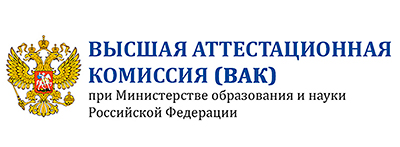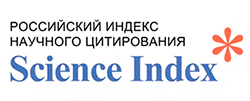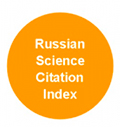«Русский парадокс»: высокое образование/низкий человеческий капитал
Аннотация
Некоторые аспекты демографического профиля современной России — такие как ее депопуляция и устойчивый избыток смертей над рождаемостью — когда-то казались отличительными, но сегодня все чаще встречаются как в Европе, так и в других «развитых регионах» по классификации ООН. Но другие аспекты по-прежнему остаются весьма отличительными. Мы рассмотрим один из них здесь: мы называем его «парадоксом высокого образования/низкого человеческого капитала» России. Несмотря на уровень образования, сопоставимый с другими европейскими странами и развитыми странами в других регионах, уровень смертности взрослых в России не лучше, чем в странах «третьего мира», а по некоторым показателям даже выглядит как в «четвертом мире», в странах наименьшим уровнем социально-экономического развития. Кроме того, несмотря на значительные кадры высокообразованных мужчин и женщин, у России также, по-видимому, есть серьезные проблемы с «созданием знаний». Прогнозы предполагают, что профиль смертности взрослых трудоспособного возраста в России останется неблагоприятным в течение следующих десятилетий, и что глобальная доля России в высокообразованной рабочей силе будет снижаться в течение следующего поколения. У таких тенденций есть экономические и потенциально геополитические последствия. В заключение мы отмечаем, что похожее сочетание высокого уровня образования с высокой смертность взрослого населения не встречается в большинстве других стран бывшего советского пространства.
Скачивания
Литература
Barro R.J., Lee J.W. (2013). A new data set of educational attainment in the world, 1950-2010. Journal of Development Economics, 104, 184-198. https://www.nber.org/papers/w15902
Eberstadt N. (2010). Russia’s Peacetime Demographic Crisis: Dimensions, Causes, Implications. Seattle, WA: National Bureau of Asian Research https://www.nbr.org/publication/russias-peacetime-demographic-crisis-dimensions-causes-implications/
Eurostat (2024a). Population change – Demographic balance and crude rates at national level. https://doi.org/10.2908/demo_gind
Eurostat (2024b). Total fertility rate (tps00199). https://doi.org/10.2908/TPS00199
Eurostat (2024c). Live births by mother's age and legal marital status. https://doi.org/10.2908/DEMO_FAGEC
Hammadeh N., Rompaey C., Metreau E., Eapen Sh. (2022). New World Bank country classifications by income level: 2022-2023. World Bank Blogs https://blogs.worldbank.org/opendata/new-world-bank-country-classifications-income-level-2022-2023
Institute for Health Metrics Evaluation (2022). https://ghdx.healthdata.org/gbd-results-tool
IHME–CHAIN Collaborators (2024). Effects of education on adult mortality: A global systematic review and meta-analysis. The Lancet, 9(3), E155-E165, March https://doi.org/10.1016/S2468-2667(23)00306-7
Lesthaeghe R. (2020). The second demographic transition, 1986-2020: sub-replacement fertility and rising cohabitation – a global update. Genus, 76 (10). https://doi.org/10.1186/s41118-020-00077-4
Rosstat (2022b). Life Expectancy at birth in the Russian Federation, 1990-2020. https://rosstat.gov.ru/folder/12781
Rosstat (2020-2021a). General Results of the Natural Movement of the Population of the Russian Federation. https://rosstat.gov.ru/storage/mediabank/2021_edn12.htm
Rosstat (2020b). Births, deaths and natural population growth. https://rosstat.gov.ru/storage/mediabank/progn5.xls
Rosstat (2020c). Population Change by forecast options. https://rosstat.gov.ru/storage/mediabank/progn1.xls
Rosstat (2019-2021a). De jure population of Russia as of January 1. https://eng.rosstat.gov.ru/
Rosstat (2019b). Vital Movement of the Population Conditions of the Russian Federation – 2020 (archive) [edn12_2020k.xlsx, tab 1] https://rosstat.gov.ru/storage/mediabank/wxWlqMlx/edn2020.rar
Rosstat (2019c). The Demographic Yearbook of Russia. General Population Replacement Indices. http://www.gks.ru/bgd/regl/B19_16/Main.htm
Rosstat (2019d). The Demographic Yearbook of Russia. Table 2.8. Net Reproduction Rate. https://www.gks.ru/bgd/regl/B19_16/Main.htm
Rosstat (2017). Demographic Yearbook of Russia. Table 4.5. Live births by mothers marital status. http://www.gks.ru/bgd/regl/B17_16/Main.htm
Rosstat (2006). The Demographic Yearbook of Russia. Table 2.8. Net Reproduction Rate. http://www.gks.ru/bgd/regl/B06_16/Main.htm
Rosstat (2019). The Demographic Yearbook of Russia 2019. http://www.gks.ru/bgd/regl/B17_19/Main.htm
United Nations DESA (2024). The Least Developed Country Category: 2024 Country Snapshots. United Nations Department of Economic and Social Affairs. https://www.un.org/development/desa/dpad/wp-content/uploads/sites/45/2024-Snapshots.pdf
UNESCO Institute for Statistic (2022). Educational Attainment Rate, completed Bachelor’s or equivalent education or higher, population 25+ years, both sexes (%). https://sdg4-data.uis.unesco.org/
UN Population Division (2024). World Population Prospects 2024, Online Edition, Medium Variant. https://population.un.org/wpp/Download/Standard/Population/
United States Census Bureau (2022). International Database. Components of Population Growth 1992-2012. https://www.census.gov/data-tools/demo/idb/
University of California, Berkeley (USA), and Max Planck Institute for Demographic Research (Germany) (2022). Human Mortality Database. www.mortality.org
USPTO (2020). Calendar Year Patent Statistics, 2016-2020. https://www.uspto.gov/web/offices/ac/ido/oeip/taf/reports_stco.htm
USPTO (2015). Patents by Country, State, and Year – Utility Patents, 2002-2015. https://www.uspto.gov/web/offices/ac/ido/oeip/taf/cst_utl.html
Van De Kaa C.F. (1987). Europe's Second Demographic Transition. Population Bulletin, 42(1), 1-59.
The World Intellectual Property Organization (2022a). WIPO Statistics Database, International Applications by Origin. https://www.wipo.int/export/sites/www/pressroom/en/documents/pr_2020_848_annexes
The World Intellectual Property Organization (2022b). WIPO Statistics Database. 1 – PCT Applications by filing date, (Total PCT Applications selected for shown countries). http://www.wipo.int/ipstats/en/statistics/pct/
Wittgenstein Centre for Demography and Global Human Capital (2024).Wittgenstein Centre Data Explorer Version 2.0. http://www.wittgensteincentre.org/dataexplorer
The World Bank (2022a). World Development Indicators, GDP per Capita, PPP (Current International $). http://data.worldbank.org/indicator/NY.GDP.PCAP.PP.CD
The World Bank (2022b). World Development Indicators. https://databank.worldbank.org/reports.aspx?source=world-development-indicators
The World Bank. (2022c). Fertility rate, total (births per woman). https://data.worldbank.org/indicator/SP.DYN.TFRT.IN?locations=RU
World Health Organization (2022a). Global Health Observatory Data Repository, Life Expectancy, Life tables by country. https://apps.who.int/gho/data/node.main.LIFECOUNTRY
World Health Organization (2022b). Global Health Observatory Data Repository, Disease and injury country estimates, 2008: By sex and age, Data by country, http://apps.who.int/gho/data/node.main.1006?lang=en.
WHO – Europe (2022). European Health for All database (HFA-DB). https://gateway.euro.who.int/en/datasets/european-health-for-all-database/
World Trade Organization (2022a). Time Series of International Trade, Trade in commercial export services, Commercial services exports by main sector – BOP6 SOX. http://stats.wto.org/StatisticalProgram/WSDBViewData.aspx?Language=E
World Trade Organization (2022b). Time Series of International Trade, Trade in Telecommunications, computer, and information services – BOP6 – SI. http://stats.wto.org/StatisticalProgram/WSDBViewData.aspx?Language=E
























